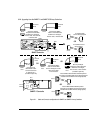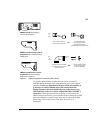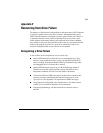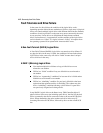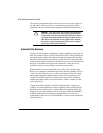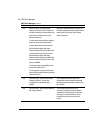
H-4 Recovering from Drive Failure
Writer: Rickard Project: Compaq Smart Array 3200 Controller Reference Guide Comments: 340862-002
File Name: O-APPH.DOC Last Saved On: 12/7/98 1:47 PM
COMPAQ CONFIDENTIAL - NEED TO KNOW REQUIRED
The capacity of replacement drives must be at least as large as the capacity of
the other drives in the array. Drives of insufficient capacity will be failed
immediately by the controller without starting the Automatic Data Recovery.
CAUTION: If the Smart Array 3200 Controller has a failed drive,
replace this drive with a new or known-good replacement drive.
In some cases, a drive that has previously failed by the controller
may appear to be operational after the system is power-cycled, or
after removal and reinsertion of a hot-pluggable drive. However,
this practice is highly discouraged as the use of such “marginal”
drives may eventually result in data loss.
Automatic Data Recovery
If a drive in a fault-tolerant configuration is replaced while the system power is
OFF, the controller displays a Power-On Self-Test (POST) message during the
subsequent system startup. This indicates that the replacement drive has been
detected and that Automatic Data Recovery might need to be started. Press F1
to initiate the background Automatic Data Recovery process. If Automatic Data
Recovery is not enabled, the logical drive remains in a “ready-to-recover”
condition and the same query displays at the next system restart.
Replacement drives are not considered to be “online” until Automatic Data
Recovery is completed, at which time the online LED stops blinking and is on
“solid.” Any drives that are not yet “online” are treated as if they are “failed”
when trying to determine whether fault tolerance will be compromised. For
example, in a RAID 5 logical drive with no spare and one drive rebuilding,
another drive failure at this time would result in a “failure” condition for the
entire logical drive.
In general, the time required for a rebuild is approximately 15 minutes per
gigabyte. The actual rebuild time, however, depends upon the rebuild priority
set for the amount of I/O activity occurring during the rebuild operation, the
disk drive speed, and the number of drives in the array (RAID 4 and RAID 5).
In RAID 4 and RAID 5 configurations, the rebuild time varies from 10
minutes/GB for three drives to 20 minutes/GB for 14 drives (using 9-GB wide-
ultra hard drives).




